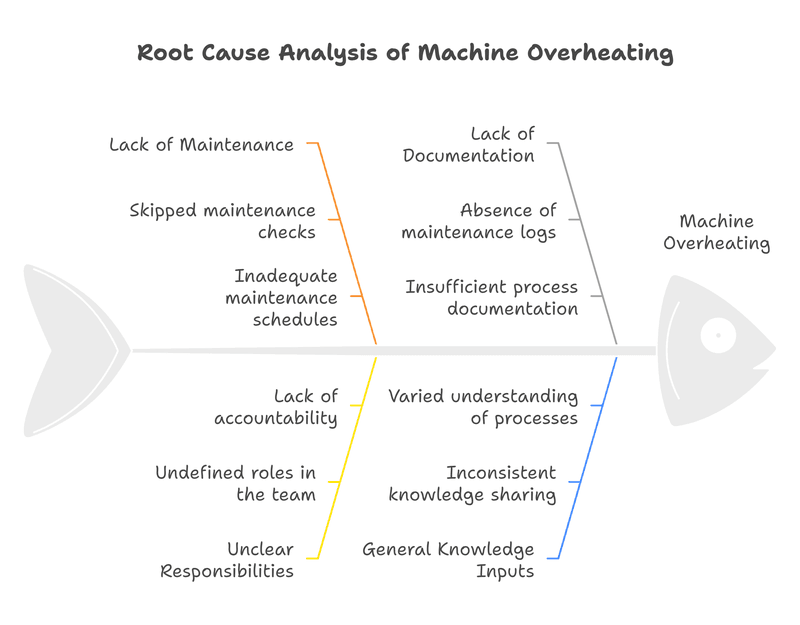Step 1: Start with why
The question "Why?" is an essential instrument of human inquiry, but its effects are vastly, often dichotomously, different within the personal and professional domains.
- In real life: It tends to produce defensiveness or fault-finding.
- In business: It acts as a problem-solving tool that enables root cause analysis and process improvement.
This article looks at the psychological, cultural and communication reasons behind these differences.
Related Stories: It also offers practical strategies to close the gap—make sure you … “Why?” is used positively in both personal and workplace settings.
The "Why?" Question in Personal Life – A Lay Man’s Minefield
Psychological Understanding — From Rationalization to Scapegoating
It was an answering machine, “Why?” frequently brings out a defensive response — it suggests the need to justify or an accusation of failure.
- Defensive Mechanisms: Social cognition research shows that people tend to consider behavior to be due more to traits than situational factors (the correspondence bias). This makes "Why?" seem like an attack on personal identity.
- Passive-Aggressive Dynamics: “Why?” as framed can make it an edgewise criticism (e.g., “Why did you do it this way again?”). This is consistent with Watzlawick’s theory that communication always has a content and relational meaning.
Communication Models Explaining the Ambiguity
📌 Watzlawick’s Axioms:
- “You cannot not communicate” – Even quiet after a "Why?" question communicates a signal (e.g., avoidance or resistance).
- Level of Content vs. Level of Relationship: “Why did you do this?” may be meant as a neutral question but is often taken as blame.
📌 Four-Sides Model by Schulz von Thun:
The question comes with subtext, such as:
- “You erred!” (relationship level)
oder - “You need to change your behavior!” (appeal)
E.g.: “Why are you late?” – They may sound like a factual question, but become mistrust or criticism.
Takeaway: The emotional weight of “Why?” in face-to-face interactions tends to obscure its purpose, therefore making it a monster risk for conveying messages.
The "Why?" Business Question – Disputes to Collaboration
Unlike personal contexts, “Why?” is a primary way of optimizing efficiency and solving problems in professional environments.
The 5-Whys Method: Focusing on Systems, Not Individuals
The 5-Why Method as it relates to quality management and process optimization focuses on identifying root causes as opposed to the scapegoat of blame.
📌 Exemplar from Toyota Production System:
- Why did the machine stop? → Overheating.
- Why did it overheat? → Lack of maintenance.
- Why was maintenance skipped? → Unclear responsibilities.
- Why were roles unclear? → Lack of documentation.
- How can you have no documentation? → This should facilitate wide general knowledge inputs.
👉 Award: The organization fixes the maintenance processes and documentation to ensure such things do not happen in future rather than blaming employees.

Why Does It Work in Business?
- ✅ Clear Frameworks: The 5-Why Method used in a structured environment lessens emotional responses.
- ✅ Process over people: It is not about blaming someone for the failure.
- ✅ Meta-Communication in Teams: Workplace communication has explicit rules (e.g., feedback culture) that reduce misunderstandings.
Keeping the Professional and Personal “Why?” in Sync
Why Context Matters
- 🔹 Emotional Filters & Analytical Filters: Personal conversations are subjectively influenced by emotions (the relationship level), whereas the business setting uses structured methods like 5-Why to keep discussions objective.
- 🔹 Cultural Influence: In companies like Toyota, making a mistake is a learning opportunity; that mindset is often lost in personal interactions.
How to Use "Why?" — Understanding the Power of Intuition: How We Can Use It More Effectively in Daily Life
🚀 Re-Frame the Question to Find Solutions
- ✅ Example 1: This is not the same as “Why would you do this?”, say “What led to this decision?” → Promotes reflection without sparking defensiveness.
- ✅ Example 2: Rather than “Why do you always arrive late?”, ask “How do we make sure we’re on time?” → Reorients attention to future remedies.
Introduce Meta-Communication 🚀
- ✅ Get clear on intention before asking “Why?” → “I’m wondering out of curiosity, not criticism.”
- ✅ Validate emotion: “I can see that this is a sensitive subject, and I want you to know I’m just trying to figure it out.”
Conclusion & Practical Tips
Key Takeaways
- 📌 "Why?" is a double-edged sword – Its impact depends on context, tone, and communication norms.
- 📌 Other tools, like communication models (Watzlawick, Schulz von Thun), help decode the hidden meaning behind the question.
- 📌 The 5-Why Method known in business, when utilized systematically, can become a compelling analytical tool.
Actionable Recommendations
✅ In Personal Life:
- Use I statements over direct “Why?” clarifications (e.g., “I’d like to understand what happened.”).
- Always check in with the four levels of communication before you ask (facts, relationship, self-revelation, appeal).
✅ In Business:
- Use psychological safety to implement the 5-Why Method in retrospectives.
- Interweave with visual aids (e.g., Ishikawa diagrams, etc.) for structured root-cause analysis.
Read More & Going Forward
📌 Want more insights? See these related subjects:
📢 Discussion: How do you use the “Why?” in different settings? Tell me your experiences in the comments!
Hashtags for Visibility:
#CommunicationSkills #PsychologyOfLanguage #5Whys #BusinessEfficiency #LeadershipDevelopment
